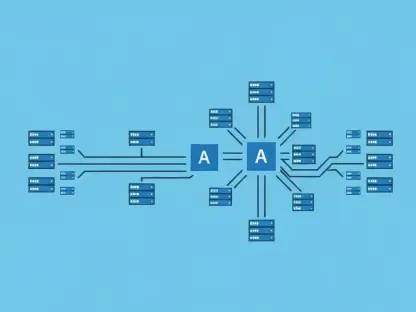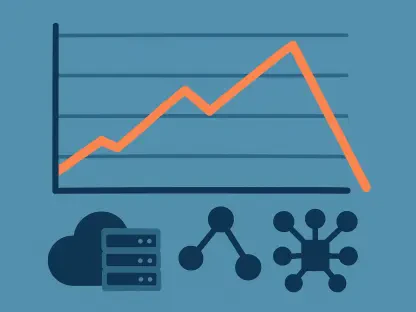Welcome to an insightful conversation with Vijay Raina, a renowned expert in enterprise SaaS technology and software design. With a deep background in architecting innovative solutions, Vijay has been at the forefront of thought leadership in creating scalable systems that drive business transformation. Today, we dive into the fascinating world of compound AI systems—dynamic ecosystems of intelligent agents that are reshaping enterprise workflows. Our discussion explores the essence of these systems, their design principles, real-world applications, and the critical balance between automation and human oversight, offering a glimpse into the future of hyperautomation and personalized engagement.
How would you describe compound AI systems to someone who’s new to the concept?
At its core, a compound AI system is like a team of specialized digital workers, each with a unique role, collaborating to solve complex business challenges. Unlike a single AI tool that might just handle one task, these systems are ecosystems of multiple intelligent agents—think of them as planners, data gatherers, or action-takers—that work together seamlessly. They share information, adapt to changing needs, and tackle interconnected workflows, much like how different departments in a company collaborate to achieve a common goal. This makes them incredibly powerful for enterprises looking to automate and optimize at scale.
What sets compound AI systems apart from the traditional AI tools businesses have used in the past?
Traditional AI tools were often siloed, built for a specific purpose—like a chatbot for customer service or a model for data analysis. They didn’t talk to each other, so context and intent got lost between processes. Compound AI systems, on the other hand, are all about integration and collaboration. They’re designed as a network of agents that communicate, pass on critical information, and adapt based on real-time inputs. This interconnectedness allows them to handle end-to-end workflows, making them far more effective for complex, dynamic environments where multiple tasks and goals intersect.
Can you share a real-world scenario where compound AI systems can create a significant impact?
Absolutely. Take a utilities company managing field service operations. They might deploy a set of AI agents working together: one agent assesses customer complaints and creates a resolution plan, another pulls up relevant data like equipment locations or past issues, and a third schedules technicians and sends out alerts. This kind of setup dramatically cuts down response times, ensures the right resources are allocated, and boosts overall productivity. It’s a perfect example of how compound AI can streamline operations that involve multiple steps and stakeholders.
When designing these systems, why is it so important for each AI agent to have a single, well-defined role?
Giving each AI agent a single responsibility—much like how you’d assign clear roles in a team—keeps things manageable and efficient. When an agent focuses on one task, whether it’s planning, retrieving data, or executing actions, it’s easier to build, test, and improve that specific function. This modularity also means if something goes wrong, you can pinpoint the issue without overhauling the entire system. Plus, it allows for scalability; you can add or tweak agents without disrupting the whole workflow. It’s about creating clarity and flexibility in a complex setup.
How does an event-driven approach enhance the responsiveness of these AI systems in enterprise settings?
An event-driven approach is like having a system that reacts instantly to what’s happening around it. Instead of waiting for a scheduled task or a manual trigger, agents in a compound AI system respond to events—like a customer query or a system alert—as they occur. This is powered by event messaging and brokers that ensure the right agent gets the right signal at the right time. It makes the system incredibly agile, able to adapt to unexpected changes or urgent needs, which is critical in fast-paced enterprise environments where delays can be costly.
Why is integrating enterprise data such a game-changer for the performance of AI agents?
When AI agents have access to a company’s full range of data—both structured, like databases, and unstructured, like documents—they can make decisions with a complete picture in mind. Imagine an agent trying to resolve a customer issue without knowing past interactions or relevant policies; it’s bound to miss the mark. By integrating enterprise data through secure connectors, vector databases for quick searches, or knowledge graphs for understanding relationships, agents become context-aware. This leads to more accurate, relevant outcomes and builds trust in the system’s capabilities.
Security is often a concern with advanced systems. How do you approach safeguarding compound AI systems in an enterprise context?
Security is non-negotiable, especially when dealing with sensitive enterprise data and automated decisions. The key is building a robust framework from the ground up. This means setting strict access controls so only authorized entities interact with data or agents, maintaining detailed audit trails to track every action for transparency, and regularly checking compliance with regulations like GDPR or HIPAA. It’s also about anticipating risks—encrypting data in transit and at rest, for instance—and ensuring ethical use of AI. Without this foundation, even the most innovative system can become a liability.
How do you see human oversight fitting into the operation of compound AI systems?
Human oversight, or what we call human-in-the-loop, is essential to keep automation in check and handle situations that require nuance or ethical judgment. While AI agents can handle routine tasks with speed and precision, there are moments—like approving a high-stakes decision or addressing an unexpected edge case—where human input is critical. Having mechanisms like approval workflows or intervention protocols ensures people can step in without slowing down the system. It’s about striking a balance: leveraging AI for efficiency while keeping human wisdom in the mix for accountability and trust.
What do you foresee as the future trajectory for compound AI systems in enterprise environments?
I believe compound AI systems are just the beginning of a major shift in how enterprises operate. Over the next few years, I expect these systems to become even more sophisticated, with tighter integration of emerging technologies like advanced natural language processing and real-time analytics. We’ll see them evolve into true digital ecosystems that not only automate but also anticipate business needs, driving proactive rather than reactive strategies. The focus will also shift toward stronger governance and ethical guidelines to ensure these powerful tools are used responsibly. Ultimately, they’ll be a cornerstone of operational resilience and personalized customer experiences.









